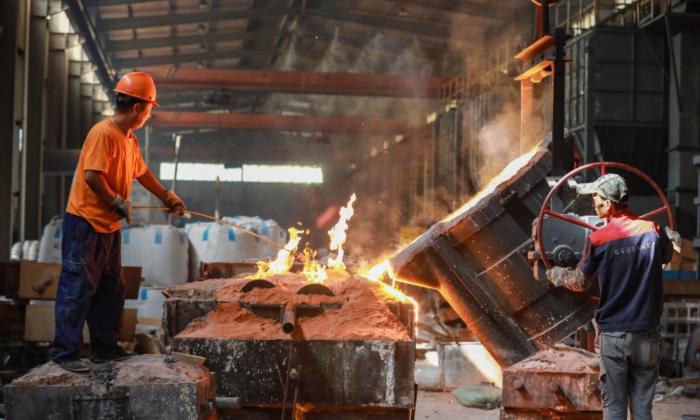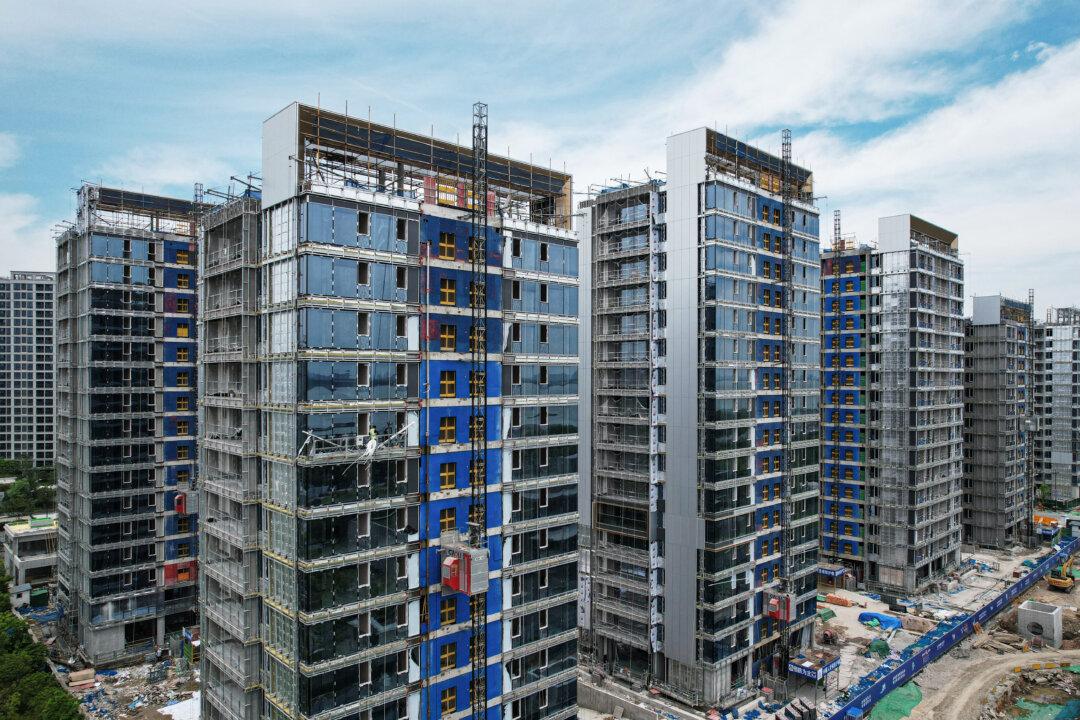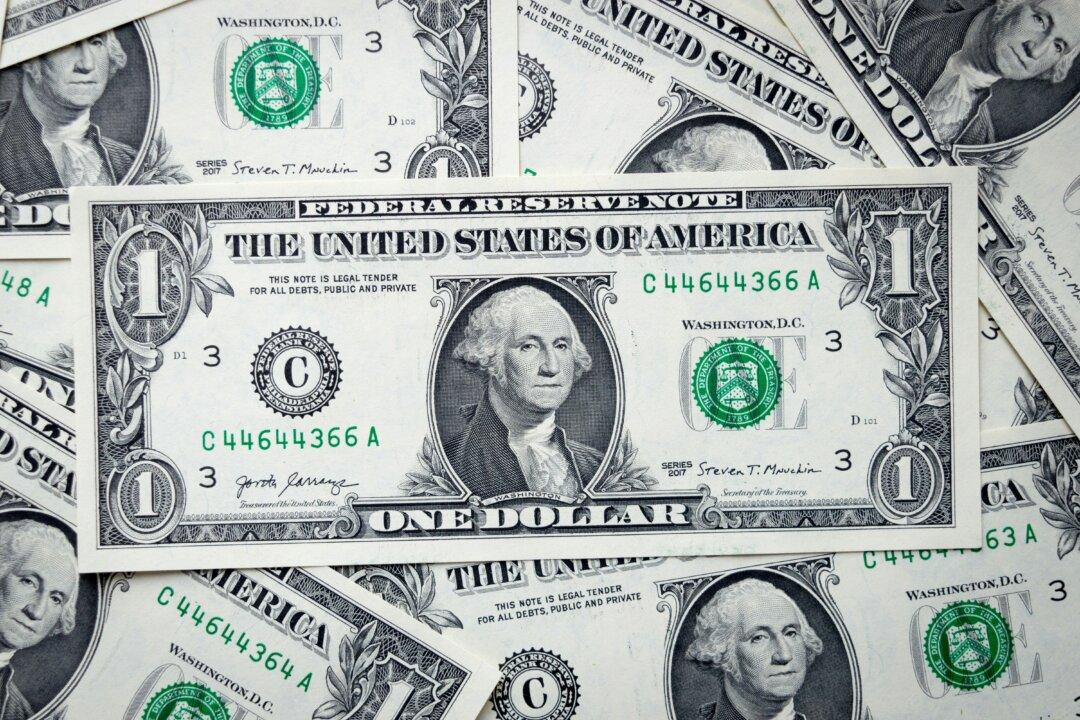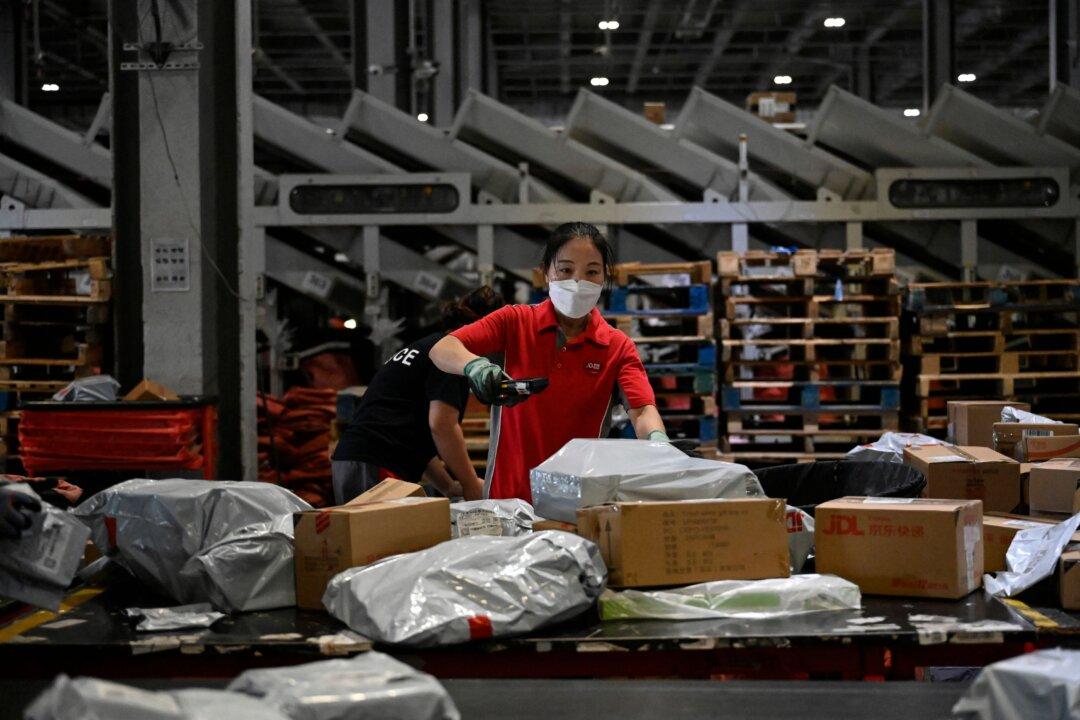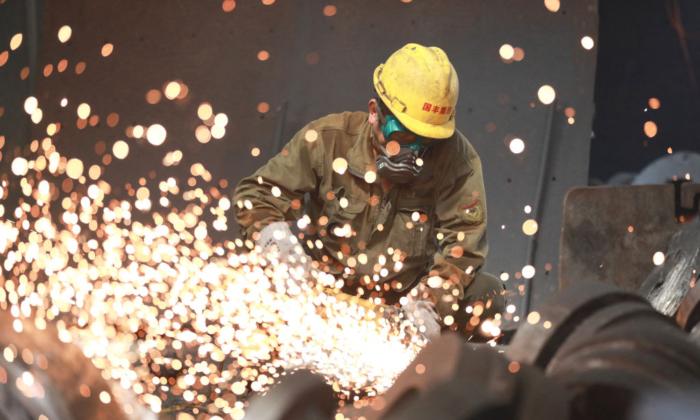China’s factory activity shrank for the fifth straight month in August, and non-manufacturing activity set a record low for the year, putting pressure on Beijing to reverse the economic slump and provide support to shore up growth. Yet, while the Chinese authorities said last month that they are trying to drag the economy out of a crisis, there is little that Beijing can do to fix the economy swiftly, said an expert.
“Although it is a widely-held view that the government needs to do more [to help rescue the economy from its current state], exactly what it needs to do is being actively debated,” Robert Carnell, regional head of research for the Asia-Pacific region at ING, told The Epoch Times.
For example, more policy rate cuts will be good, “but that’s not easy because China also has a problem with the currency weakness, and rate cuts undermine the profitability of the banks as well,” said Mr. Carnell.
Similarly, massive government investment in infrastructure would be beneficial, but it would also lead to massive debt, which is undesirable.
“So there are many things the government could do, which would be nice. But there aren’t very many things the government practically can do [to give the slumping economy a quick fix],” he added.
According to the National Bureau of Statistics’ (NBS) official release on Aug. 31, the manufacturing purchasing managers’ index (PMI) increased marginally in August to 49.7 from 49.3 in July. This exceeded the median expectation of 49.4, according to a Reuters survey.
A PMI rating above 50 implies that activity is expanding, whereas a value below that level suggests that activity is contracting.
The official non-manufacturing PMI, in contrast, dropped to 51.0 in August from 51.5 in July and has been falling steadily since reaching a high of 58.2 in March.
After a flurry of trade, manufacturing, and retail statistics in July, the PMI provided the first indication of how the world’s second-largest economy performed in August, and the weak numbers are maintaining pressure on officials to announce more policy measures, the NBS added.
Debt Crisis
That aside, China is also struggling to recover from a domestic and foreign debt crisis that is threatening the country’s economic development, financial security, and global clout.While official numbers are unavailable, according to Statista, the national debt is projected to rise $15.6 trillion by the end of 2023—an increase of $1.8 trillion from 2022—pushing China’s debt-to-GDP ratio to a record high.
The main drivers of China’s debt growth are the local governments and the corporate sector, especially the state-owned enterprises (SOEs). Local governments have been borrowing heavily to finance infrastructure projects and stimulate economic growth, often using off-budget financing vehicles that evade official scrutiny and regulation.
SOEs have been leveraging to expand their market share and support Beijing’s strategic goals, such as innovation and industrial upgrading. However, both sectors face low profitability and high default risks, posing a threat to the financial system and fiscal sustainability.
The yuan—as the worst-performing Asian currency this year following weaker-than-expected activity data and prolonged weakness in the property sector—has also been one of Beijing’s headaches, prompting the authorities to initiate a policy rate cut two weeks back.
However, the unexpected reduction of China’s main policy rates by the People’s Bank of China (PBOC) on Aug. 15 added depreciation pressures on its currency and led to capital outflows, as foreign investors sought higher returns elsewhere after losing faith in the economy.
Over the past week, Beijing has taken a focused approach to help the economy, ranging from steps to increase lending and stock investment to more tangible measures to increase home demand.
On Aug. 25, for example, China announced rules for affordable housing to increase access to first-time homebuyer financing, followed by a 50 percent reduction of stock-trading stamp duties, the first drop since 2008.
China’s largest banks are also widely expected to reduce rates on current mortgages as a concrete move toward supporting growth.
“Several banks, including ABC, CCB, Citic Bank, and CMB, have already responded to calls for existing mortgage rates cuts,” Everbright Securities (UK) wrote in a note on Aug. 30.
Citic Bank, for example, said it had analyzed its related business and made plans for potential business adjustment. CMB said existing mortgage rate cuts are “imperative, and have also formulated proposals.”
China’s ‘Economy Is Not Moving Forward’
Those aside, local governments in China have increased their borrowing rates for infrastructure construction, a trend that has the potential to stimulate economic expansion. In addition, Beijing recently promised to increase government spending.On Aug. 30, the central bank met with businesses and financial institutions to improve private sector access to finance.
Still, China’s property slowdown, weak consumer spending, and falling loan growth threaten Beijing’s annual GDP growth forecast of approximately 5 percent this year. Economists at major banks, such as Morgan Stanley and UBS, have recently lowered China’s GDP projections for 2023, citing less-than-expected governmental support.
According to Mr. Carnell, the only good news in these numbers is that the contraction is happening at a slower pace, “which is better than a spiral southward.”
However, the manufacturing and non-manufacturing sectors appear to be converging at 50, “which means that the economy is still struggling by moving sideways, which is a concern because the economy is not moving forward,” Mr. Carnell said, adding that “the economy has not bottomed out yet.”
